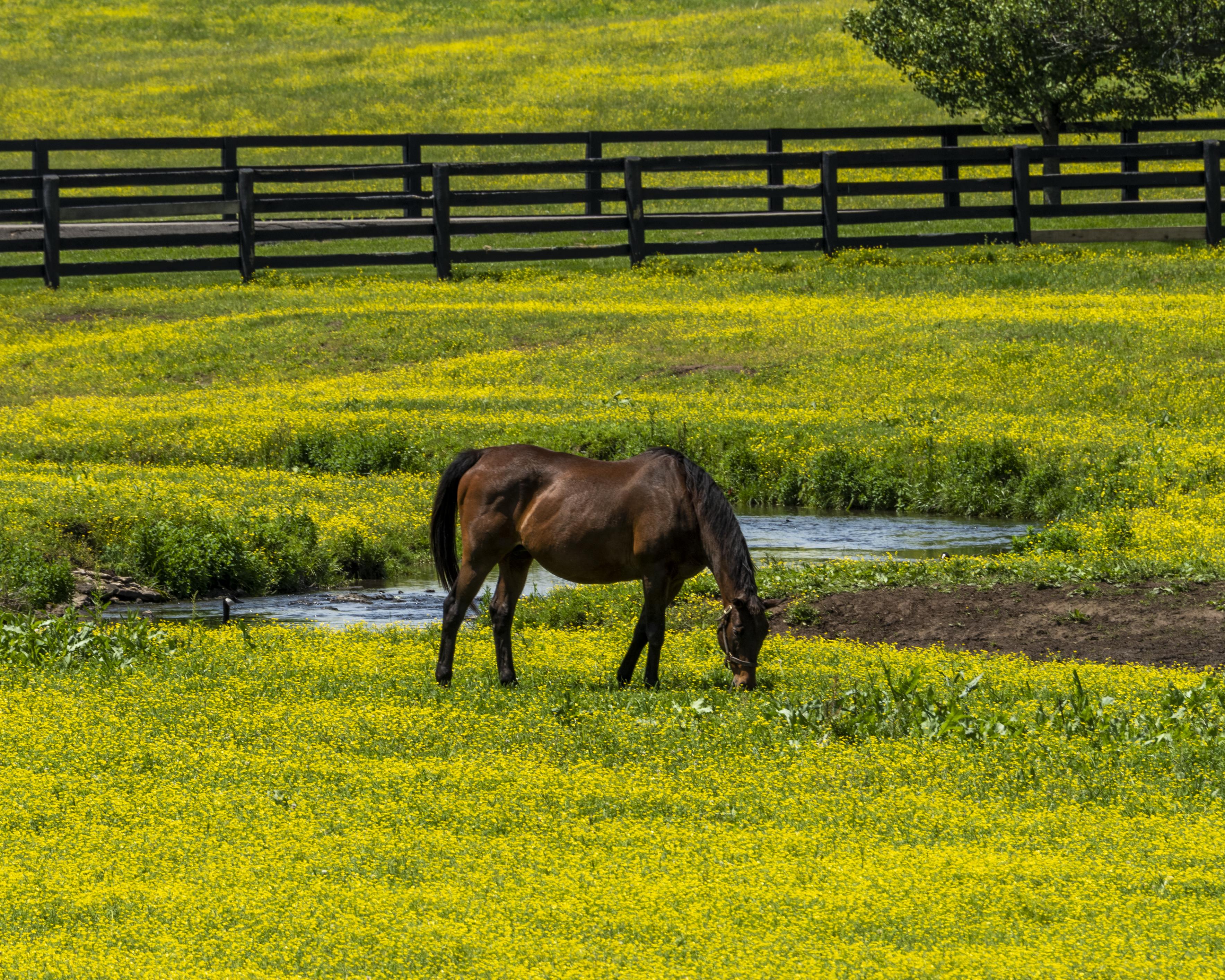The Tenacity of Buttercup
Kentucky pastures have exploded with the signature yellow buttercup flower. Buttercup is the common name for a group of species from the genus Ranunculus. Buttercups are sometimes classified as short-lived perennials, but often grow as winter annuals.

Four species of buttercups can be found in Kentucky: bulbous buttercup (Ranunculus bulbosus), creeping buttercup (Ranunculus repens), tall buttercup (Ranunculus acris) and small flower buttercup (Ranunculus arbortivus). Each of these species have somewhat similar flower heads but differ in their leaf characteristics. New seeds are produced during the time petals are showy. Waiting until after flowers appear can be too late to implement control tactics. This is one reason buttercups can survive year to year.
Buttercups are more than an unsightly weed. They can also be toxic. Grazing or mowing will release a powerful vesicant, or blistering agent, which causes blistering of the skin, mouth and digestive system on contact. The blistering agent is detoxified rapidly by drying, and thus it is not generally a problem in hay.
Less is known about whether ensiling, or conversion into silage, has a similar detoxification effect. Death of horses due to buttercup is rare. A review of University of Kentucky Veterinary Diagnostic Laboratory records over the last 13 years found no cases of horse deaths attributable to buttercup ingestion. If other forage is available, grazing horses will usually avoid buttercup because the leaves, flowers and stems have a sharp, acrid taste.
Most buttercup plants emerge from seed during the fall or late winter months. Therefore, pasture management that maintains thick stands and promotes growth of more desirable plants during these months is one of the best methods to help compete against the emergence and growth of this plant. Mowing fields or clipping plants close to the ground in the early spring before buttercup plants can produce flowers may help reduce the amount of new seed produced, but mowing alone will not totally eliminate seed production.
Chemical Options
Herbicides registered for use on grass pastures will effectively control buttercup, including those that include 2,4-D. For optimum results, apply herbicide in the early spring (February-March) before flowers are observed and when buttercup plants are still small and actively growing. For best herbicide activity, wait until daytime air temperatures are greater than 50o F for two or three consecutive days. Consult the herbicide label for further information on grazing restrictions, precautions or other possible limitations.
Applying broadleaf herbicides like 2,4-D will damage clover. However, buttercup is able to germinate and grow because of insufficient ground cover of desirable forage species. In these cases, clover stands are likely not that thick or need rejuvenating.
Management Options
To prevent or inhibit buttercup germination in the fall, manage grass pastures to retain residual heights of three or four inches. Realistically speaking, pastures used for overwintering, or hay feeding will always be overgrazed and therefore will be prime spots for buttercup and other winter weed encroachment. Overseeding these pastures in early spring with forages that establish aggressively (like red clover or ryegrasses) will add some desirable forage species to the spring flush of growth even though they will not eliminate buttercup emerging at the same time. Follow up with an early spring mowing to clip the buttercup and release the desirable species.
Cover up bare ground. Fall applications of nitrogen will produce taller grass (shading the ground) and will stimulate existing grasses to thicken up or tiller out the following spring. Timely mowing in the spring followed by nitrogen application can reduce buttercup seed production and will stimulate spring forage growth that helps shade the lower growing buttercup.
No matter how you go about it, controlling buttercup is not a “once and done” project. Nor will one method work alone. Chemical control alone will leave bare ground unless there is a strategy to replant or fill in that area. However, you can manage pastures to reduce buttercup incidence and improve your pasture productivity at the same time.
Happy foraging.
Jimmy Henning, PhD, extension professor in the Department of Plant and Soil Sciences, provided this information, with editing support from Bill Witt, PhD, professor emeritus, also in the Department of Plant and Soil Sciences.
